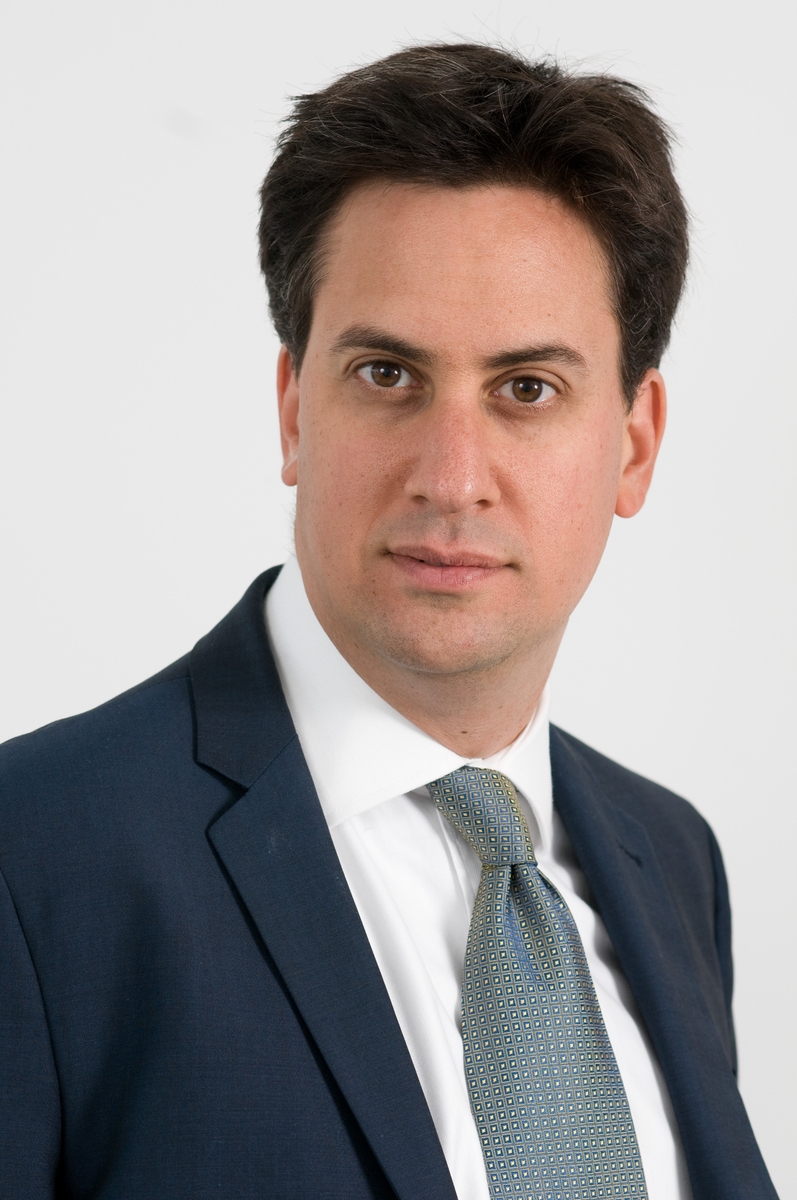16 August 2010 (2010-08-16) – 22 September 2010 (2010-09-22) 2015 → 34.33% 37.78% 50.65% 49.35% | Turnout 127,330
(71.7%) 37.78% 11.79% 49.35% Eliminated | |
 | ||
The 2010 Labour Party leadership election was triggered by a general election which resulted in a hung parliament. On 10 May, Gordon Brown resigned as Leader of the Labour Party. The following day, he stepped down as Prime Minister. The National Executive Committee decided the timetable for the election the result of which would be announced at the annual party conference. On 25 September, Ed Miliband became the new Leader of the Labour Party.
Contents
Procedure
The rules of the Labour Party stated in 2010 that "each nomination [for leader] must be supported by 12.5 per cent of the Commons members of the Parliamentary Labour Party." As the number of Labour MPs was 257 (the 258 returned at the general election minus Eric Illsley, who had been suspended from the Parliamentary Labour Party) 33 MPs needed to support any nomination. Nominations opened on 24 May and closed on 27 May, but the deadline was extended to 9 June after complaints from John McDonnell, Diane Abbott, and Ed Miliband that the short deadline had provided insufficient time to secure the 33 nominations from MPs needed for inclusion on the ballot. The ballot took place between 1 and 22 September, and the results were announced on the first day of the party's conference in Manchester, 25 September. There were three distinct electorates, the electors of which cast their votes on a "one member, one vote" basis in each applicable category:
- Labour members of the House of Commons and the European Parliament
- Individual members of the party
- Individual members of affiliated organisations, such as trade unions and socialist societies
Each of the three electorates or sections contributed one third (33.33 per cent) of the total votes and were counted using the Alternative Vote system system. The election was run by the National Executive Committee, and the results were announced at the annual conference in September 2010.
Union recommendation controversy
Under Labour Party rules, trade unions were allowed to make recommendations to their members, but were barred from doing this in the same envelope that contained the ballot paper. During the election, it emerged that both the GMB and Unite had included both an envelope containing the ballot paper, and an envelope containing promotional material for Ed Miliband, their favoured candidate, in the same communication. Though the promotional material was in a separate envelope to the ballot paper, this nevertheless attracted criticism that they had breached the spirit of the rules.
Candidates
At a meeting of the Cabinet held on 10 May 2010, it was agreed that no one would announce their candidacy until after formal negotiations in regards to forming a government were resolved. The Conservative Party and Liberal Democrats formed a coalition on 11 May, and David Miliband became the first person to announce his candidacy the following day. A total of six candidates emerged by 20 May:
On 9 June John McDonnell withdrew from the contest in favour of Diane Abbott, who eventually made the ballot paper.
Nominations
Candidates must receive nominations from at least 12.5 per cent of the 257 Parliamentary Labour Party members (33) to appear on the ballot. John McDonnell had 16 nominations when he withdrew on 9 June, in favour of Diane Abbott. The final nominations figures were as follows:
The number of MPs next to the candidate's name below includes the actual candidate too, as they counted as one of the 33 MPs needed (except for David Miliband, as he nominated Diane Abbott to ensure her appearance on the ballot). Public nominations for candidates by MPs were as follows:
Before dropping out of the race on 9 June 2010, John McDonnell had the following 16 nominations: Ronnie Campbell, Martin Caton, Katy Clark, Jeremy Corbyn, John Cryer, Ian Davidson, Jim Dowd, Frank Field, Dai Havard, Kate Hoey, Ian Lavery, Graeme Morrice, Linda Riordan, Dennis Skinner, Mike Wood
Notable Labour politicians who declined to stand
Some members of parliament were seen as potential candidates but decided against running:
Results
In accordance with the principles of the Alternative Vote system, until one candidate won a majority, the candidate with the fewest votes in each round was eliminated and his or her second preference votes distributed to other candidates.
The total of first-round votes for Balls, Burnham, and Abbott (27.89%) was less than Ed Miliband's vote (34.33%). Thus, it was certain after the first round that Balls, Burnham, and Abbott would all be eliminated.
Turnout in the members section was 71.7%, with 127,330 votes cast of the 177,558 ballots distributed.
Constituency Labour Parties
The map below shows the results of the Constituency Labour Parties first round preferences in the leadership election by constituency, before votes were transferred due to eliminations. David Miliband took the most constituencies, winning 577 in total. He was followed by Ed Miliband who took sixty-seven constituencies. Andy Burnham won eight seats, all in north-west England, Ed Balls took two constituencies (his own, Morley & Outwood, and that of his wife, Yvette Cooper, Normanton, Pontefract and Castleford), and Diane Abbott won no constituencies. All ties with the exception of Wigan (Andy Burnham and David Miliband) were between David and Ed Miliband. Northern Ireland was counted as one constituency.
Trade Unions and Socialist Societies
Turnout in the affiliates section was 9.0%, with 247,339 votes cast of the 2,747,030 ballots distributed.
